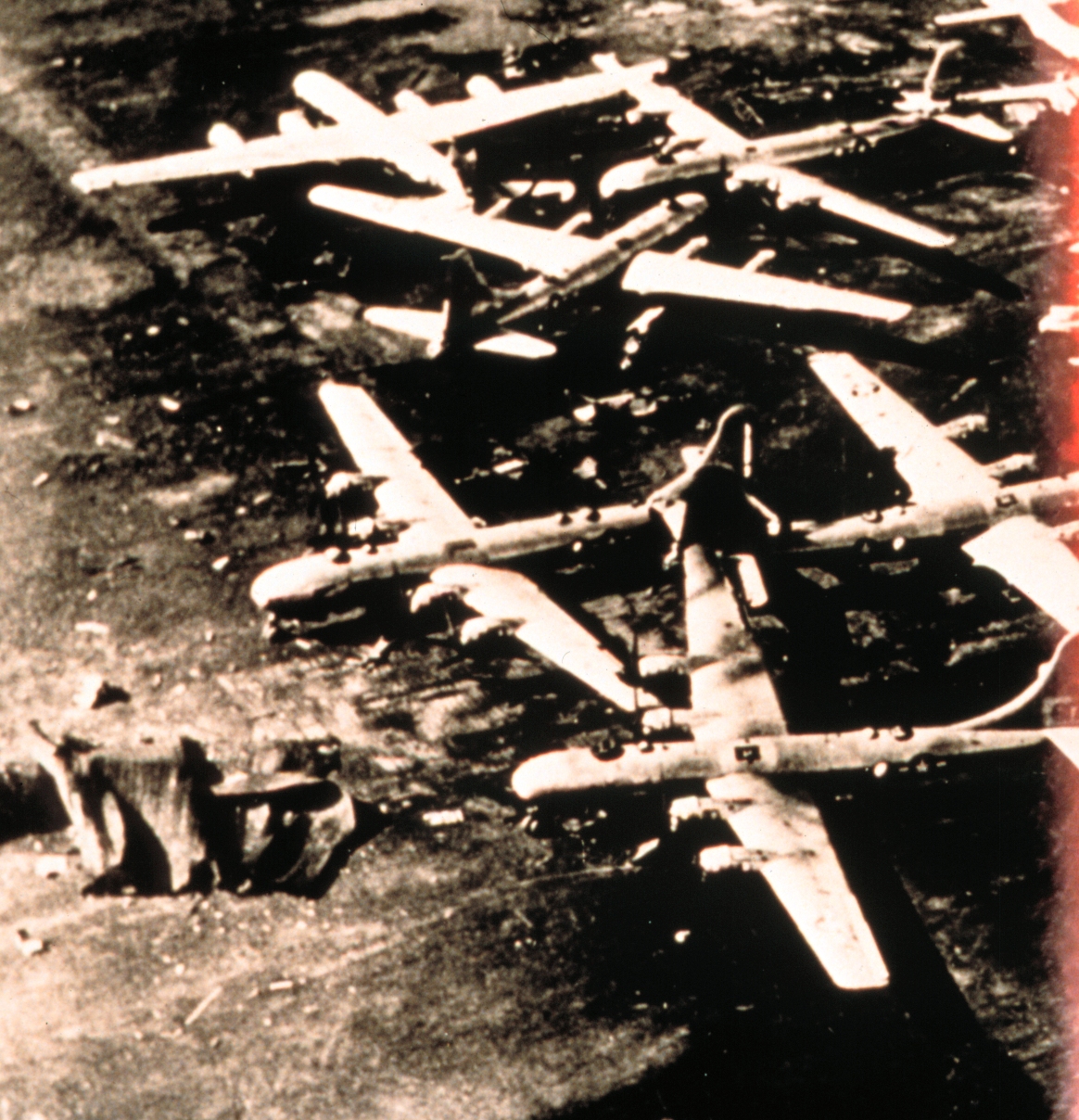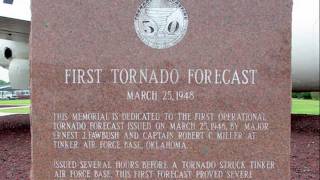
damage after the first tornado, wikipedia, 1948
The First Forecast
On March 20, 1948, US Air Force meteorologists Robert C. Miller and E.J. Fawbush at Tinker Air Force Base forecasted a clear day and were later horrified when a tornado loomed over them later that day. The tornado injured 3 people, but no one was killed. The next day, the two forecasters were called to the general's office and were ordered to study that day's weather patterns to find out what they looked like for a tornado. On March 25, after five days of studying, the meteorologists found weather patterns similar to last week's tornado and told the general to activate the storm safety plan. Late in the afternoon, the sky was still clear, and Robert decided the forecast was hopeless and decided to go home.
Around 8:00 pm Robert received a call that the base had been struck by a tornado. This storm left Tinker Air Force Base in ruins, costing millions in damage. It was that storm that caused the Weather Bureau to take down the ban. After the success of Fawbush and Miller in forecasting a tornado at Tinker AFB in 1948, and the United States Weather Bureau's lifting of the ban of the word tornado in its public forecasts in 1950, public tornado warnings began. The US Weather Bureau, in cooperation with other federal, state, and local government agencies, and the news media, found numerous ways to disseminate the imminent threat of a tornado to the public.

monument for the first forecast, youtube, 2014